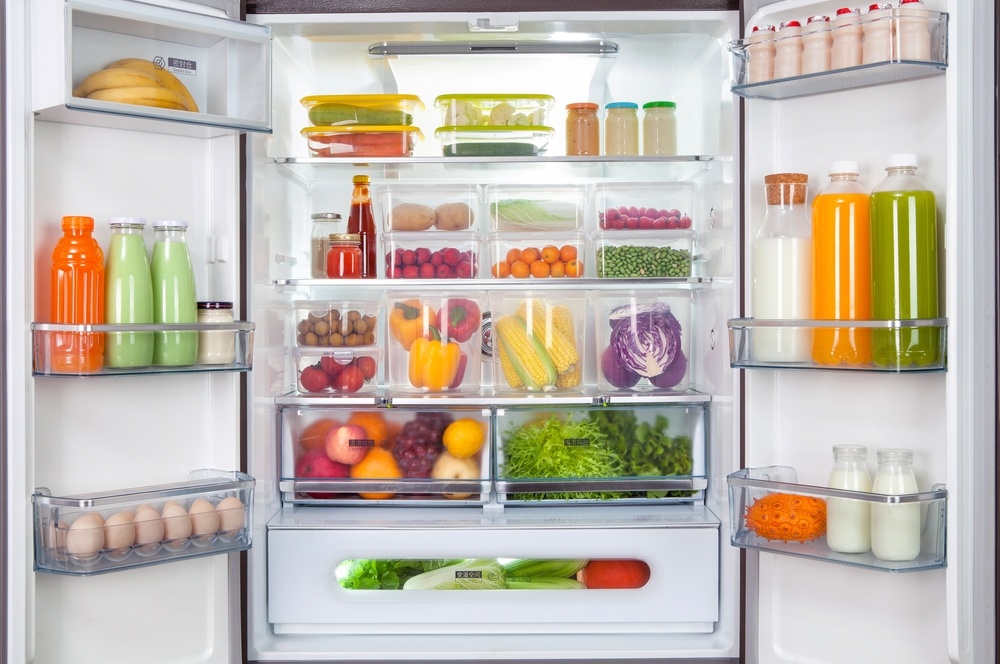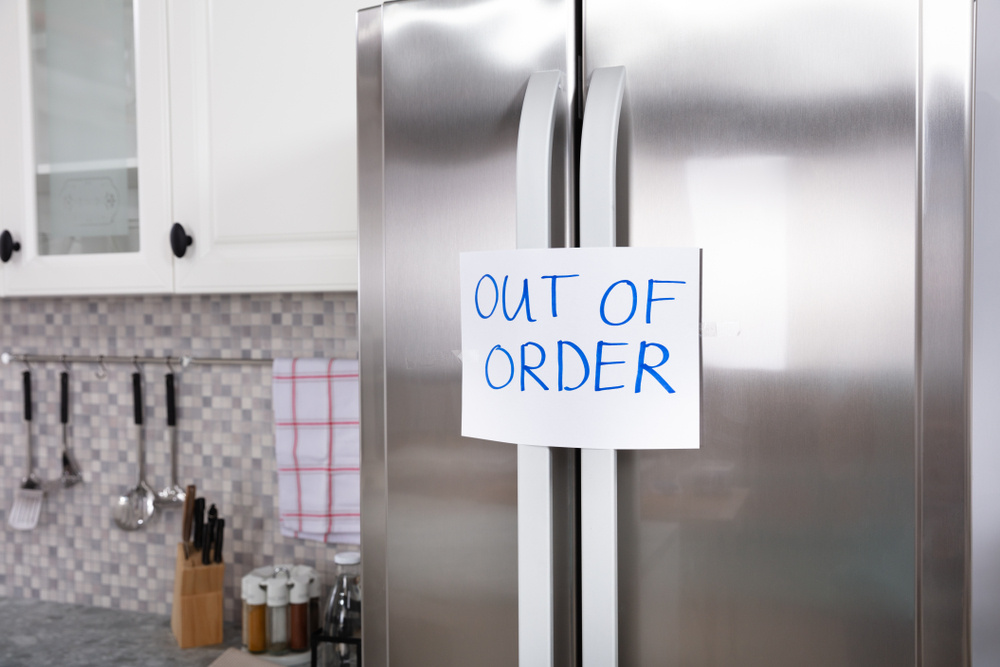Did you know that your refrigerator could be consuming up to 30% more energy than necessary? With rising electricity costs, many homeowners are looking for ways to optimize their kitchen appliances without purchasing new ones. This comprehensive guide will walk you through practical steps to enhance your refrigerator's efficiency, reduce energy bills, and extend its lifespan
Sign up for our Blog!
Understanding Your Refrigerator's Energy Usage
Before diving into specific upgrades, it's important to understand how your refrigerator uses energy. A typical refrigerator accounts for about 15% of your home's total energy consumption. By implementing the right efficiency measures, you can save significant money on refrigerator maintenance while keeping your food fresh.
I'll expand this section with more detailed explanations while maintaining the existing tone and incorporating relevant links.
Essential Temperature Optimization
Finding the Perfect Temperature Balance
One of the most impactful yet often overlooked aspects of refrigerator efficiency is temperature settings. Much like Goldilocks seeking the perfect porridge, your refrigerator needs temperatures that are "just right." The ideal temperature range for your refrigerator compartment is between 37°F and 40°F (3°C to 4°C), while your freezer should maintain 0°F (-18°C). These temperatures aren't arbitrary—they're carefully calculated to balance food safety with energy efficiency.
Think of your refrigerator as a climate-controlled safe for your food. When temperatures are too high, bacteria can multiply rapidly, potentially spoiling food within hours. When set too low, your refrigerator works overtime, consuming unnecessary energy and potentially freezing delicate items like lettuce or fresh herbs. Finding the right temperature balance is crucial for both food preservation and energy efficiency.
Understanding Temperature Zones
Your refrigerator naturally creates different temperature zones:
- Upper shelves: 38-40°F (3.3-4.4°C) - Ideal for drinks, ready-to-eat foods, and leftovers
- Middle shelves: 37-38°F (2.8-3.3°C) - Perfect for dairy products and eggs
- Lower shelves: 36-37°F (2.2-2.8°C) - Best for raw meat and fish
- Crisper drawers: 37-40°F (3-4°C) with humidity control - Optimal for fruits and vegetables
Measuring and Monitoring Temperature
To ensure accurate temperature control:
- Use a reliable refrigerator thermometer in both compartments
- Check temperatures at least once monthly
- Take readings in different areas of your refrigerator
- Monitor readings during different seasons, as external temperature affects performance
Key Benefits of Proper Temperature Settings:
- Reduces energy consumption by 5-10%, translating to approximately $20-40 annual savings
- Maintains optimal food freshness, reducing food waste and saving up to $100 monthly
- Prevents unnecessary strain on components, reducing common refrigerator problems
- Extends appliance lifespan by up to 3-5 years through reduced wear and tear
Seasonal Temperature Adjustments
Your refrigerator works harder during summer months when kitchen temperatures rise. Consider these seasonal adjustments:
Summer Settings:
- Monitor temperature more frequently
- Keep refrigerator slightly cooler if located near heat sources
- Consider using "Power Cool" features sparingly during heat waves
Winter Settings:
- May need slight temperature increases if located in colder areas
- Watch for overcooling in unheated spaces
- Monitor freezer temperatures more closely
Impact of Loading Patterns
How you stock your refrigerator affects its temperature efficiency:
- Proper airflow: Leave 2-3 inches between the back wall and food items
- Door storage: Reserve for condiments and drinks, not temperature-sensitive items
- Loading volume: Maintain 80-85% capacity for optimal efficiency
- Hot food cooling: Let items cool to room temperature before refrigerating
Warning Signs of Temperature Issues
Watch for these indicators that your temperature settings need adjustment:
- Frost buildup in the refrigerator compartment
- Excessive condensation on containers
- Ice cream that's too soft or too hard
- Freezer burn on frozen foods
- Energy bills showing unexpected increases
If you notice these signs, professional refrigerator maintenance might be necessary to ensure your appliance maintains optimal temperature control.
Smart Technology Integration
Modern refrigerators often include smart temperature controls that can:
- Automatically adjust for door openings
- Compensate for ambient temperature changes
- Alert you to temperature fluctuations
- Provide energy usage data for optimization
Consider these features when evaluating warranty options for your refrigerator, as they can significantly impact long-term efficiency and performance.
Common Temperature Mistakes to Avoid
Setting your refrigerator too cold doesn't just waste energy—it can increase your energy consumption by up to 25%. If you notice your refrigerator's not cooling properly, check the temperature settings before assuming there's a mechanical problem.
Critical Maintenance Upgrades
Seal and Gasket Maintenance
.jpg?width=1000&height=667&name=shutterstock_2356889151%20(1).jpg)
The condition of your refrigerator's door seals significantly impacts its efficiency. A failing seal forces your refrigerator to work harder, increasing energy consumption and potentially leading to common refrigerator problems.
Testing and Maintenance Steps:
- Perform the dollar bill test at multiple points around the door
- Clean seals monthly with mild soap solution
- Inspect for cracks or tears quarterly
- Replace damaged seals promptly
Condenser Coil Care
Dirty condenser coils can reduce your refrigerator's efficiency by up to 30%. Regular cleaning is essential for maintaining optimal performance.
Professional Cleaning Schedule:
- Every 6 months for homes with pets
- Annually for pet-free homes
- Immediately if you notice reduced cooling efficiency
If you're unsure about handling maintenance yourself, consider finding a reliable refrigerator repair service to help maintain your appliance.
I'll expand these sections with more detailed explanations while maintaining the established tone and structure.
Smart Organization for Better Efficiency
Strategic Food Storage
Proper organization isn't just about convenience—it's about energy efficiency. Every time you open your refrigerator door, up to 30% of the cold air can escape, forcing your appliance to work harder. When items are well-organized, you spend less time with the door open, reducing common refrigerator problems and energy waste.
Organizational Best Practices:
- Use clear containers for visibility
- Choose BPA-free containers with airtight seals
- Label contents and dates clearly
- Stack containers efficiently to maximize space
- Consider square containers over round for better space utilization
- Group similar items together
- Create designated zones for beverages, produce, meats, and dairy
- Use drawer organizers to prevent item shifting
- Place breakfast items together for quick morning access
- Keep cooking ingredients in proximity to each other
- Maintain proper airflow spaces
- Leave 1-inch gaps between items for air circulation
- Avoid blocking air vents with food or containers
- Use refrigerator mats to improve air circulation
- Keep items away from back wall cooling elements
- Keep frequently used items easily accessible
- Store everyday items at eye level
- Place children's snacks within their reach
- Use door storage for condiments and drinks
- Create an "eat soon" section for items nearing expiration
Advanced Organization Solutions

Refrigerator Zones Optimization:
- Upper Shelf Strategy
- Reserve for ready-to-eat foods
- Store leftovers in clear containers
- Place drinks toward the back
- Use rotating organizers for better access
- Middle Shelf Management
- Ideal for dairy products
- Store eggs in original cartons
- Place prepared dishes at eye level
- Use drawer organizers for cheese storage
- Lower Shelf System
- Designate for raw meats
- Use leak-proof containers
- Implement the "first in, first out" rotation
- Maintain temperature-sensitive items here
- Drawer Organization
- Adjust humidity controls appropriately
- Separate fruits and vegetables
- Use produce storage bags
- Clean drawer vents regularly
Advanced Efficiency Upgrades

LED Lighting Conversion
Replacing traditional bulbs with LED alternatives is a smart investment that can significantly reduce your refrigerator's energy consumption.
Comprehensive LED Benefits:
- Energy Efficiency
- 5-10% reduction in energy consumption
- Uses up to 75% less electricity than traditional bulbs
- Operates efficiently in cold temperatures
- Minimal impact on refrigerator temperature
- Reduced Heat Emission
- Produces 90% less heat than incandescent bulbs
- Decreases cooling system workload
- Maintains more stable internal temperatures
- Protects sensitive foods from heat exposure
- Extended Lifespan
- Lasts 25 times longer than traditional bulbs
- Requires less frequent replacement
- Reduces maintenance costs
- More resistant to temperature fluctuations
- Enhanced Visibility
- Brighter, more uniform illumination
- Better color rendering for food identification
- Instant-on capability at full brightness
- Reduces time spent searching for items
LED Installation Guidelines
Step-by-Step Conversion Process:
- Preparation
- Document current bulb specifications
- Choose compatible LED replacements
- Gather necessary tools
- Unplug refrigerator before starting
- Installation
- Remove old bulb carefully
- Clean light fixture thoroughly
- Install LED bulb according to specifications
- Test new lighting before finalizing
- Maintenance
- Keep LED fixtures clean
- Monitor for any flickering
- Record installation date
- Schedule periodic inspections
For complex upgrades or if you're unsure about any modifications, consider professional refrigerator service to ensure proper installation and maintain your warranty coverage.
Smart Technology Integration
Modern LED systems often include advanced features:
- Motion sensors for automatic operation
- Dimming capabilities for energy saving
- Color temperature adjustment
- Integration with smart home systems
When selecting LED upgrades, consider warranty coverage options to protect your investment and ensure long-term performance.
Smart Technology Integration
Modern refrigerators often include energy-saving features like vacation modes and smart temperature controls. If you're considering an upgrade, look for Energy Star certified models that can reduce energy consumption by 20-30%.
Protection and Warranty Considerations
Understanding Coverage Options
To protect your investment in efficiency upgrades, consider home warranty coverage. A comprehensive warranty can help manage repair costs and ensure professional maintenance.
Warranty Benefits:
- Coverage for unexpected repairs
- Access to qualified technicians
- Peace of mind for major components
- Potential cost savings on repairs
Professional Support and Resources
When dealing with more complex efficiency upgrades or repairs, professional help might be necessary. FixHomz offers comprehensive support for homeowners looking to optimize their appliances and reduce energy costs.
When to Call a Professional
Consider professional assistance if you encounter:
- Persistent cooling issues
- Water leakage
- Unusual noises
- Ice buildup problems
Your Path to Energy Efficiency
By implementing these upgrades and maintaining your refrigerator properly, you can achieve significant energy savings while extending your appliance's lifespan. Start with basic maintenance and gradually implement more advanced upgrades based on your budget and needs.
Remember that proper care and timely upgrades not only save money but also contribute to a more sustainable household. For personalized advice and professional assistance with your refrigerator's efficiency upgrades, contact us to learn more about our comprehensive appliance care solutions.





.jpg)
.jpg)



.jpg)

